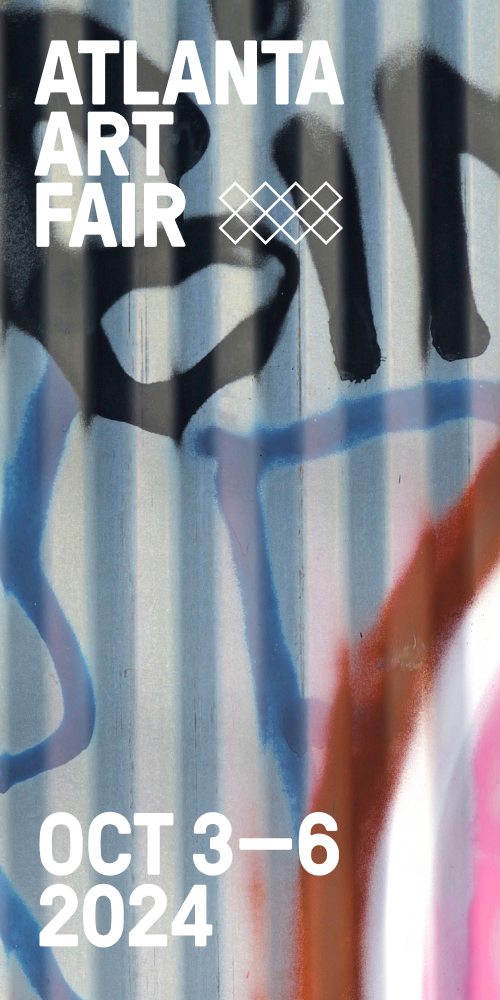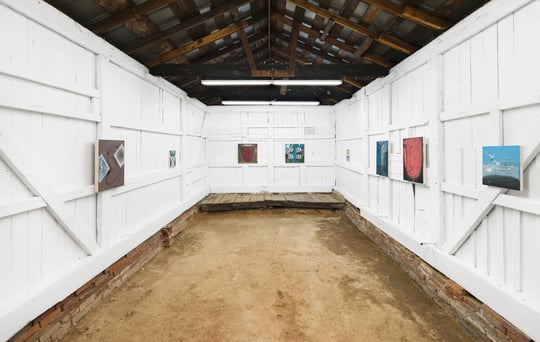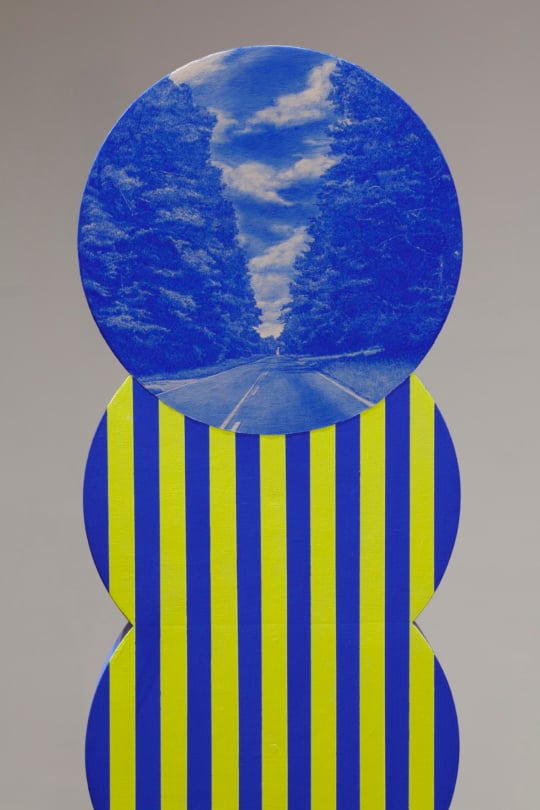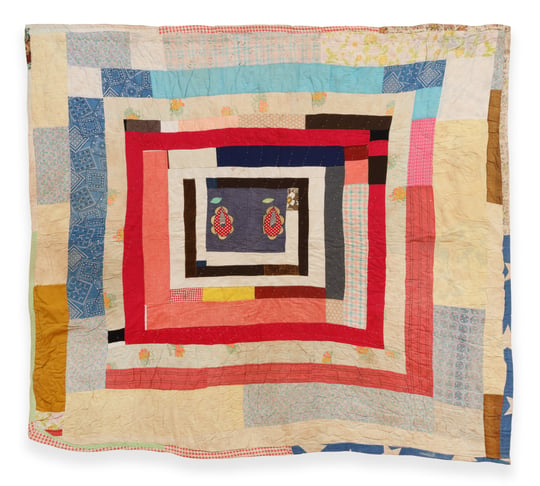
The ghost orchid, a perennial epiphyte native to Cuba and the Florida Everglades, has a flower that looks like a star, if stars could dance. Budless, the orchid’s roots coil around tree trunks in thick green spirals; when it blooms in midsummer, the plant unfurls a billow of white petals that appear to flutter past its camouflaged base—rendering the orchid a floating phantasm. In dark cypress domes, the orchid reflects its dew and glows; because spotting it typically requires slogging through mud and the subjection of one’s flesh to mosquitoes, the orchid’s eventual appearance seems sudden, magical. Cristina Molina embodies the flower in her video, Ghost Orchid: Fever Dream; the artist, a Miami native and New Orleans resident, described the orchid’s life cycle in a recent interview as “purposely enchanting.”
From July through early December of 2021, Molina screened Fever Dream at Houston’s Project Row Houses as part of “Round 52: Gulf Coast Anthropocene.” The film was projected across the walls so that Molina shimmered throughout the room; viewers had to train their eyes to catch a glimpse. Before she materializes in the video, it’s her voice that entices. Alongside the soundtrack’s other features—a crisp pulse of rain, a mellifluous hymn—a poem chides an unseen subject:
I see you too
Like I’ve seen so many before you
crossing these waters
Some, searching for freedom
Some searching for vices
Others searching for something they’ve only heard in stories
Or see like a recurring vision
Deep within their darkest dreams
Something like me
In Fever Dream’s oneiric speech, the orchid recalls centuries of travelers in the singular ecosystem of the Everglades: folks fleeing the Atlantic slave trade and forming communities with local Indigenous tribes who called and still call it home; developers who slowly depleted the landscape’s rich biodiversity. To the hunter, she insists: Your time is measured against mine. Her destruction marks his own; “to say ‘save the earth,’ also means to save ourselves,” Molina explained.
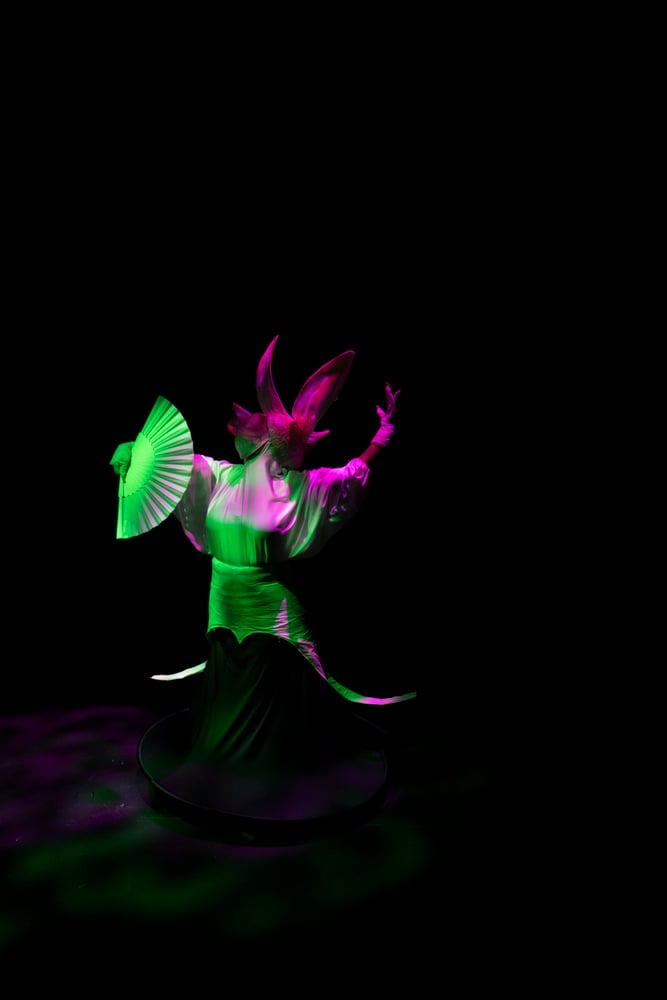
Molina learned of the ghost orchid during her 2019 residency at Artist in Residence in the Everglades (AIRIE), where her research gave birth to Neverglades, an ongoing multidisciplinary project exploring Women’s Clubs’ complex and indelible role in conserving this precious ecosystem—and, equally, transforming land that belonged to the Miccosukee and Seminole into public property from which they were forcibly removed. Throughout Molina’s studies, the ghost orchid and its many hunters, primarily nineteenth century European botanists, kept appearing. “All of this lore that exists around the ghost orchid, how elusive and desirable it is, that it’s called a ghost, ” she told me, “is a metaphor for the stories hidden within the swamp.”
The artist studied psychology in college, a field that nurtured her love for Jungian archetypes and the emotional significance of storytelling—about both the self and the land we live on. The ghost orchid of Fever Dream is, said Molina, archetypal. “She’s the High Priestess: intuitive, mysterious, spiritual.”
In a 2016 story for Naples Daily News, Larry Zettler, director of the Orchid Recovery Program at Illinois College, describes ghost orchids as “the canaries of the mine shaft…Orchids that are starting to decline in a habitat, that’s a warning that something’s not right.” Although orchid diversity in the Everglades is the highest of any National Park in the continental U.S., there are only about 2,000 ghost orchids in the state. They’re hard to find, harder to observe. “The orchid needs the perfect formula of moisture, humidity, and air quality to grow; the seeds have to fall perfectly on this carpet of algae, which also has to have the right temperature,” Molina said. Subject to the health of the Everglades and its faunal residents, the ghost orchid is as vulnerable to climate change and overdevelopment as it is to poaching.
Using similar devices of expression as those in Fever Dream, Molina has contended with the urgency and heartache of climate crisis in several recent projects. For the short film River River (2018), she and artist Leah Floyd conducted flag dances along the Mississippi River, flanked by petrochemical statecraft overshadowing the water it’s purportedly meant to protect. A year later, the installations Altar for Marjory Stoneman Douglas and Altar for Zora Neale Hurston paid homage to the women writers of iconic Florida stories. “I would say [my work] isn’t just about the impacts of climate change on the landscape, but also its impact on the stories we tell ourselves within that landscape—the myth-building,” Molina said.
Of all the earth’s treasures so brutally extracted and exploited, it’s the desire for orchids that has been most likened to love, or to madness. Victorian-era Europeans were plagued with orchidelirium, a trend that spawned rivalrous global expeditions to pluck the flowers from Asia and the Americas and display them in ornate greenhouses. When apparently worthless plants collected from earlier conquests unexpectedly bloomed in an array of colors, the fervor was unmoored. It was not unusual for a poacher to urinate on his competitor’s plunders or, Molina learned at AIRIE, “set the whole area on fire so no one else could come poach it.” In a 2015 Smithsonian story, orchid specialist Tom Mirenda attributes the rampant desire to the plant’s symmetry, a kind of unwitting anthropomorphization: “You look at an orchid, and it looks back at you. They seem to have a face, like a human.”

Houses Houston. Images by Alex Barber.
Conquests never meet their rapacious demands; removed from their natural habitats, many wild orchids won’t survive longer than a year. This fails to dissuade even contemporary poachers. Consider John Laroche, the real-life subject of Susan Orlean’s The Orchid Thief. In 1993, Laroche—alongside Dennis Osceola, Vinson Osceola, and Russell Bowers, members of the Seminole Tribe of Florida—took 136 plants from the Everglades, including the ghost orchid, stuffing them into garbage bags and pillowcases to be propagated for profit. (Working with Bowers and the Osceolas, Laroche reportedly sought to invoke laws that allowed Indigenous Floridians to selectively hunt flora and fauna from their own land. It didn’t work; Laroche was fined.) Today’s ghost orchid seekers have the more virtuous goals of conservation and care, but they’re no less haunted. In Chasing Ghosts, a 2019 documentary on the search for the ghost orchid’s pollinators, conservation photographer Mac Stone muses, “There’s a really strange fervor about this orchid…I stay up at night, I cannot sleep.” Molina felt a deep, primordial kinship with the flower, though not a delirium. “The ghost orchid is indigenous to Cuba and Florida, both sites of my heritage,” she said.
The work in “Gulf Coast Anthropocene” intended to broaden the temporality of the Anthropocene—to impart, without didacticism, the cyclicality of this moment, the way it’s rooted in a continuous eradication of traditional ecological knowledge systems. The ghost orchid’s endangerment was set in motion long ago, with the disavowal of Indigenous traditions in the Everglades—which seemed, to developers and others ignorant to the subtropical cycle of wet and dry seasons, a perpetually wet nuisance: … Drawing up false territories / Extracting without pause, Fever Dream’s orchid recites, enumerating the habits of her seekers. Can we prevent her predictions from coming true, again and again? “We have to try,” Molina told me. “We can’t lose hope.”
In November, Molina, alongside her collaborative alliance Crystal Efemmes, performed Ghost Orchid: Holograms at Aurora Picture Show in Houston. An addendum to Fever Dream, Holograms “focused on the symbiosis between the moths and the orchid,” Molina said. That several moths pollinate the ghost orchid bodes well for its survival; in Holograms, the flitting creatures also love her. Here, the flower is the one who’s enchanted, amorous and caught in an embrace with the moth who feasts on her nectar. And I get dizzy with desire, she says as the moth reaches for her, …our kiss sealing a compromise, a contract of our survival. “I wanted to imagine what I’d like the orchid to say, how that could be impactful and haunting,” Molina told me. “I like the idea of being haunted. If something haunts you, it’s persistent…like a dream that bubbles up and evaporates again.” Like its namesake, perhaps the ghost orchid hopes we’ll become haunted, become the hunter who stops searching and acquiesces to her needs. Allow her mysteries to remain arcane. Venerate her and the earth, nurture them enough to keep them alive. Move symbiotically alongside them, like a dance, or an embrace. Like a compromise for survival.

This essay was published in partnership with Oolite Arts as part of a project to increase critical arts coverage in Miami-Dade County.


